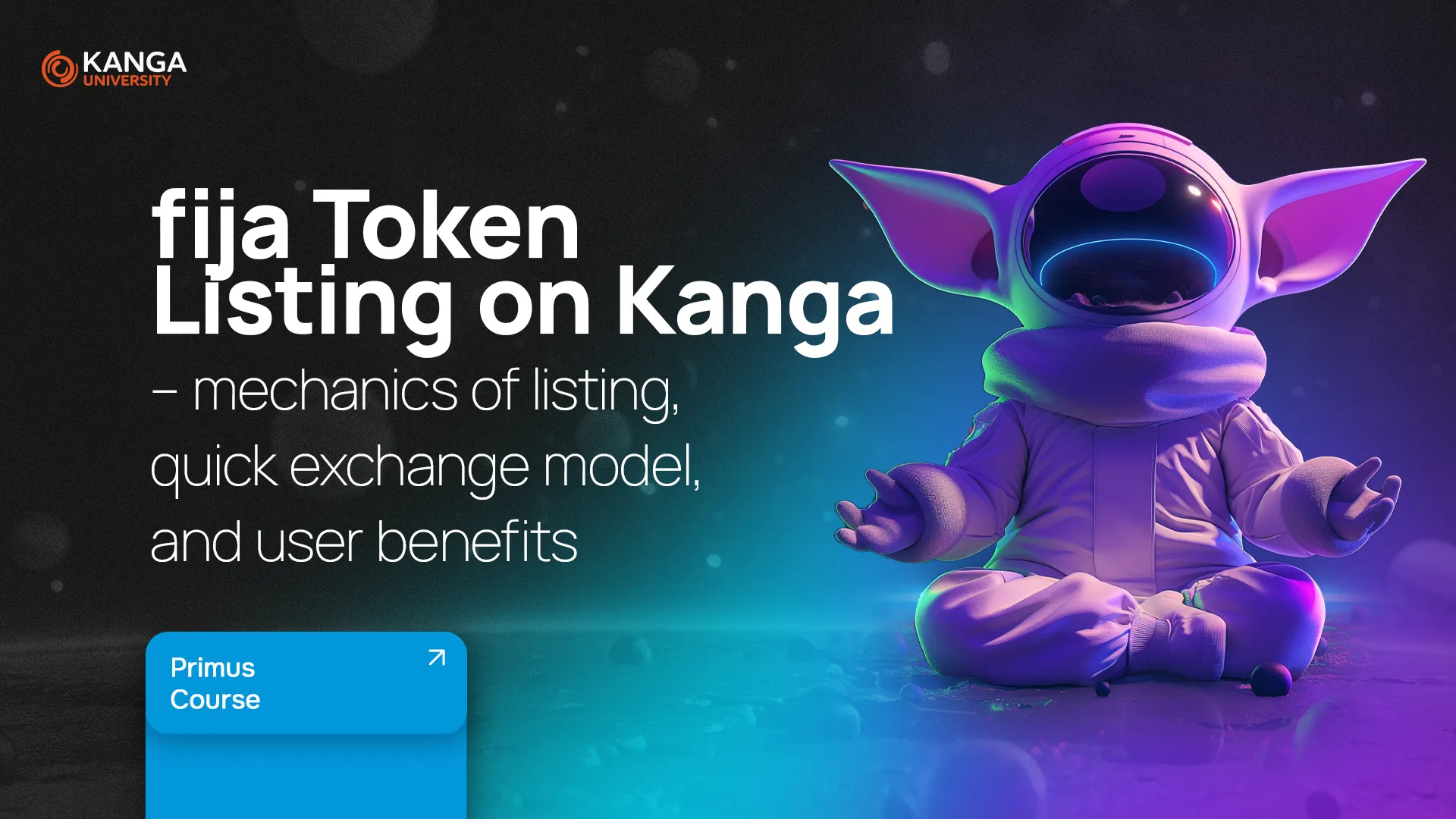
As fija Finance expands access to compliant yield-generating tokens, listings on centralized exchanges play a key role. The listing of the fija token on Kanga Exchange introduces a fast, user-friendly way for everyday users to swap into the fija ecosystem. This lesson explores how the Kanga listing works and what makes the Quick Exchange model unique. We will also explore why it is a smart move for early adopters and businesses looking for liquidity and simplicity.
How fija Token Listings Work
The fija token was created to be available on centralized crypto exchanges, particularly where users already hold their crypto assets. This approach ensures easy access and immediate utility. Investors don’t need to move assets between wallets or interact with complex DeFi protocols to participate. Exchanges can list fija tokens as part of their Earn product offerings. Subsequently, it allows users to convert major cryptocurrencies like BTC, ETH, or USDC into yield-bearing fija tokens.
Each fija token represents a real yield-bearing position in the underlying asset. For example, fija-ETH represents Ethereum allocated into a strategy to earn yield. This structure provides transparency and direct alignment between the user’s token and its underlying value. Yield is continuously reinvested, increasing the token’s value over time. This is shown in its price for individuals and businesses, accessible via the fija smart contract or API.
fija provides initial and ongoing liquidity for its token pairs, like fija-ETH/ETH, meaning users can enter and exit positions directly on the exchange. There is no reliance on third-party market makers or liquidity providers. Instead, fija smart contracts guarantee liquidity at the current token price, calculated from the value of the yield-generating assets.
Kanga Exchange Listing: A Strategic Gateway
Kanga Exchange was selected as a listing partner due to its flexible infrastructure and focus on innovation. Unlike traditional centralized exchanges that require order books and complex trade execution, Kanga offers an alternative model through its Quick Exchange feature. This tool simplifies token swaps, reduces friction for new users, and ensures instant access to tokens like fija.
The Kanga Quick Exchange model removes the need for buy/sell orders. Instead, users simply choose the token they want to swap, like USDT or ETH, and input the amount. The system immediately quotes how much fija they’ll receive, and the swap is executed instantly.
This is ideal for a utility token like fija. It isn’t developed for high-frequency trading but rather to earn passive income on existing assets. Quick Exchange supports ease of use while maintaining fair pricing, with rates likely derived from liquidity pools or external price feeds to reduce slippage and offer transparency.
Token Availability and Accessibility
With the Kanga listing, fija tokens become available to users across Europe and globally. This aligns with fija’s mission of making compliant DeFi yield accessible to the masses. Users on Kanga can now:
- Swap directly into fija tokens without a wallet connection.
- Participate in a regulated earning product.
- Enjoy transparency and liquidity with real-time pricing.
- Avoid complex staking or yield farming steps.
The listing also increases fija’s visibility among Kanga Exchange’s large audience. Users who may not have interacted with DeFi products previously can now do so easily via a trusted exchange interface.
Importantly, fija tokens remain utility tokens as defined by Art. 4(3)(c) MiCAR, which means they do not require a whitepaper and are not classified as securities. This compliance-first approach positions fija to operate effectively in European and international markets with minimal legal friction.
fija Token Variants on Kanga Exchange
As part of the token listing on Kanga, there will be two separate fija tokens available, each representing participation in a specific strategy and asset pool. Both will be accessible through Quick Exchange (no order book) and will reflect yield-bearing strategies from the fija Finance platform.
1. fjUSDC
- Represents fija’s USDC-based strategy
- Backed by automated, on-chain yield generation mechanisms
- Suitable for users seeking stablecoin exposure with steady returns
- Ideal for more conservative DeFi users who want lower volatility and consistent growth
2. fjETH
- Represents fija’s ETH-based strategy
- Allows users to earn yield on ETH-denominated assets
- Suitable for users who want to stay exposed to ETH while benefiting from automated compounding and strategy optimization
- Higher risk/reward profile than fjUSDC, reflecting ETH’s price dynamics
Why the Quick Exchange Model Matters for fija
The Quick Exchange model is better because of fija’s user-friendly goals:
- Frictionless Entry: Users can get exposure to yield-bearing tokens without managing wallets or interacting with DEXs.
- Accessibility: Casual investors can participate using their existing tokens, like BTC, ETH, or USDC.
- Liquidity on Day One: fija provides liquidity directly. Because of this, users can swap in and out with confidence and real-time pricing.
- Retail-Friendly: The user experience feels more like a traditional fintech app than a complex crypto exchange.
Summary
fija Finance’s listing on Kanga Exchange is an important milestone in its journey to democratize access to DeFi earnings. By using Kanga’s Quick Exchange model, fija avoids traditional exchange complexity. This means it can provide users instant access to yield-generating tokens in a fully compliant, secure environment. The listing improves accessibility and liquidity. It will help fija deliver transparent crypto yield to everyday investors in a regulatory-safe framework.